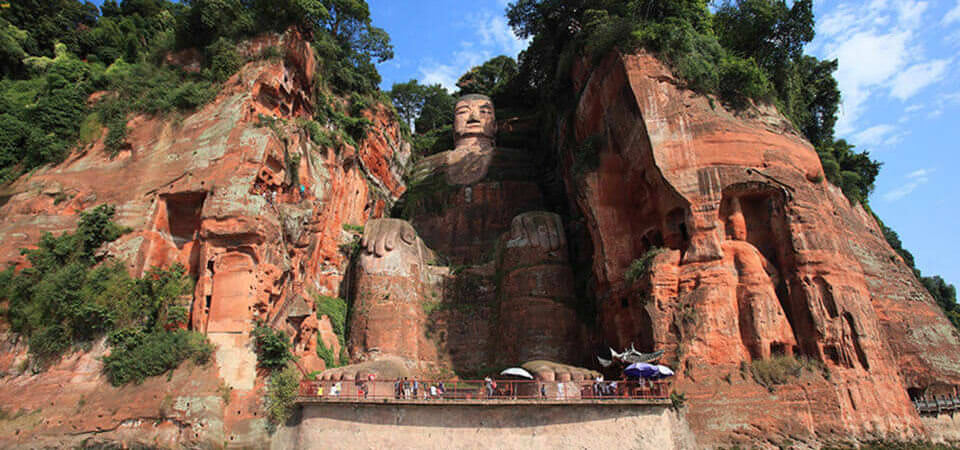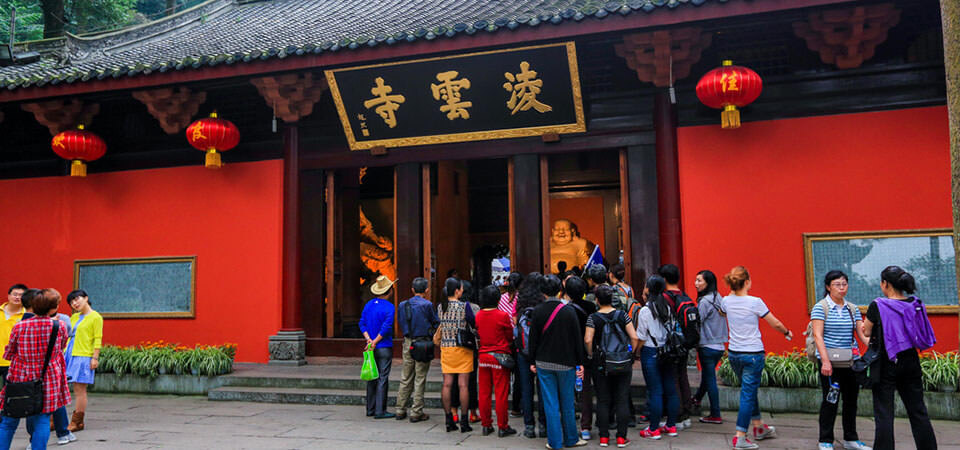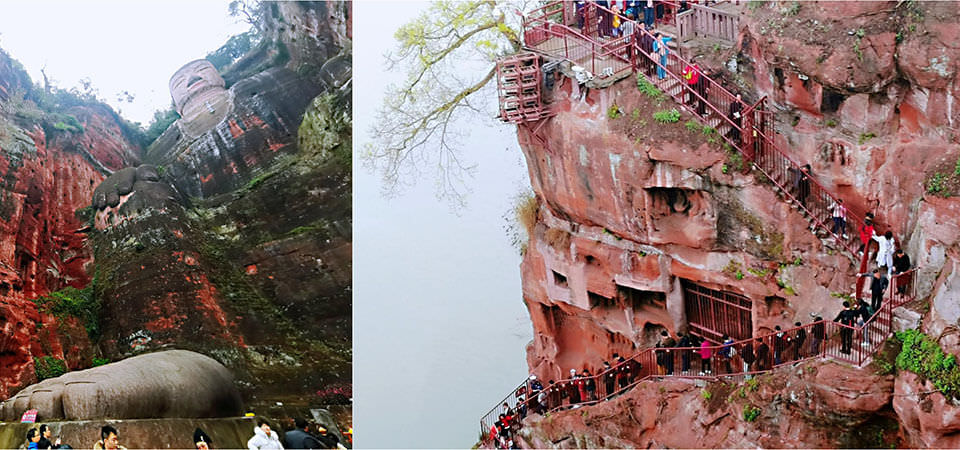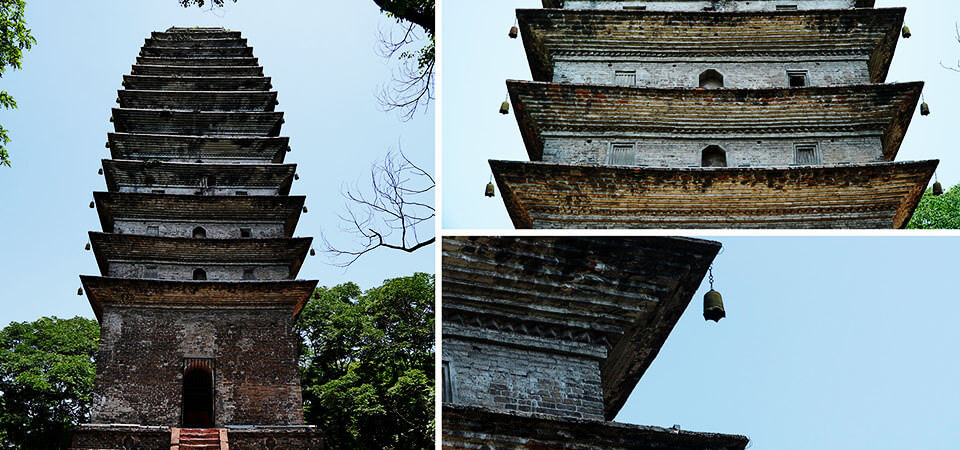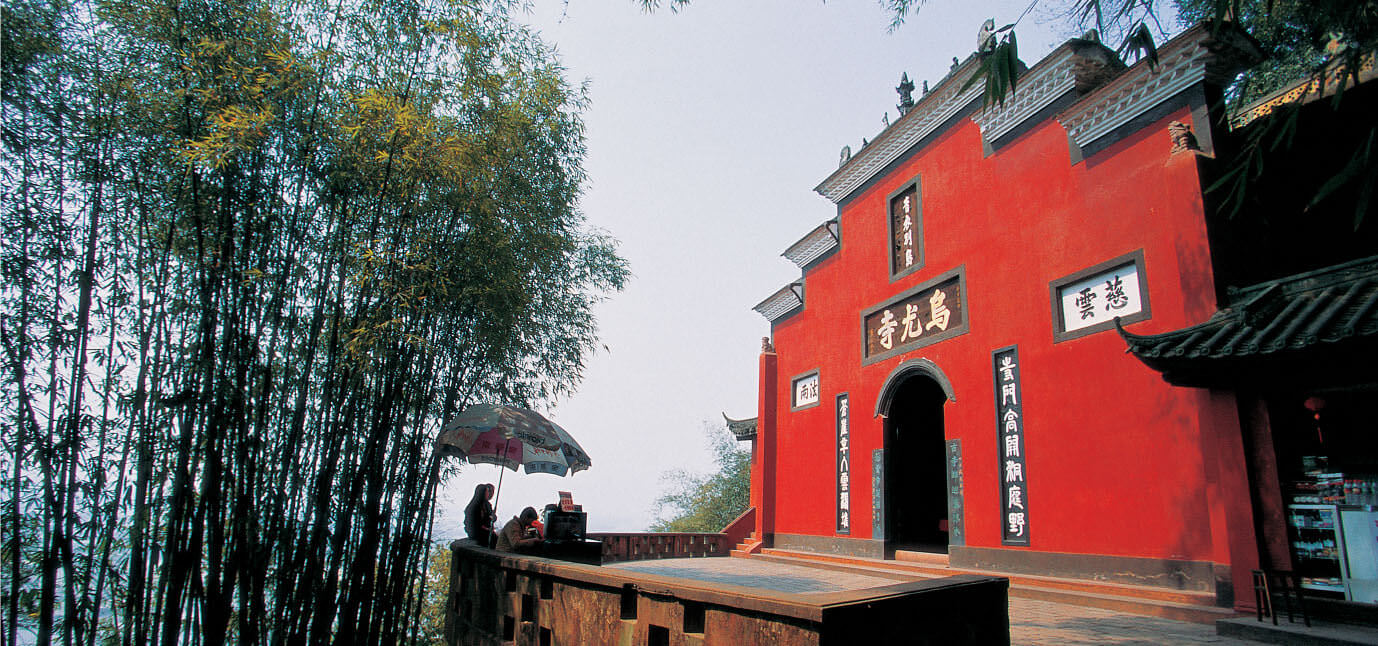Tag: #Leshan and Chengdu Sightseeing #Buddhism #History #Mountain Hiking #Photographing
Also called as Jiazhou in old times, Leshan city has a history of over 2000 years and earned its name of Leshan as it hosts the spectacular Leshan Mountain on its southern side. In ancient times, Leshan city was a rich in malus spectabilis, which crowned the city the Kingdom of Malus Spectabilis. Nowadays, the unique natural and human landscapes made Leshan one of the top travel destinations in Sichuan. What makes it even more charming is the enigmatic Leshan Giant Buddha, which not only presents the magic power of nature but also the power of human creativity. However, the Leshan Giant Buddha is not just about the Buddha itself, it’s more about the rich Buddhism culture. People are drawn here for both scenery and belief.
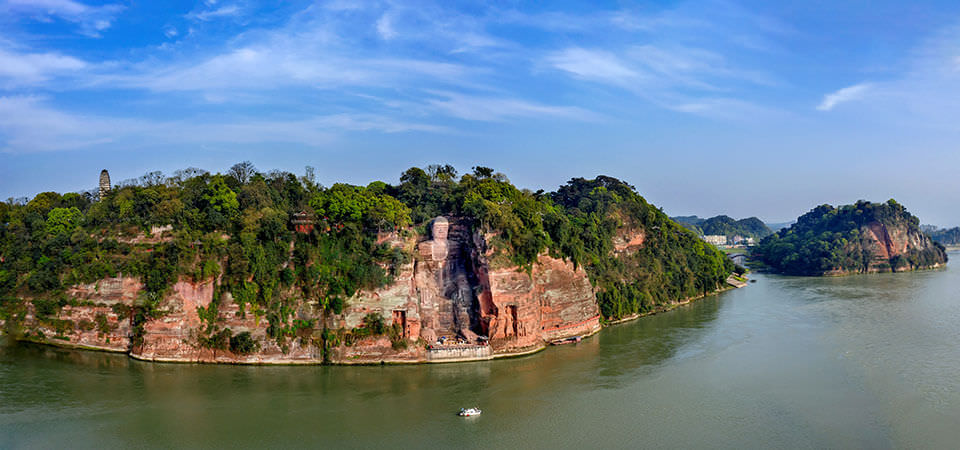
What to see?
Giant Buddha
Located at the confluence of Minjiang River, Qingyi River and Dadu River, the Giant Buddha Scenic Area has Giant Buddha, Lingyun Temple, and Wuyou Temple three parts.The very Giant Buddha is carved upon the Lingyun Mountain. It was initiated by a famous monk named Hai Tong in Tang Dynasty (618-907) and completed by Hai Tong and his disciples after 90 years of toil. When it was finished, the Giant Buddha was magnificent, graceful and impressive. The 71-meter-high Buddha statue became part of the Lingyun Mountain and the mountain itself, in turn, makes part of the Buddha. Therefore, Tang dynasty poets had a saying that the mountain is a Buddha and the Buddha is a mountain.
The best spot to appreciate the Giant Buddha is to take a boat. The whole Buddha will be perfectly presented to you. Another sweet spot to enjoy the Giant Buddha is the “Wave Observing Pavilion” built on the Wuyou Mountain. Standing on the top of the Wuyou Mountain, you will see the roaring river mixing with silt surging along.
Lingyun Temple
Accompanying the Giant Buddha is the Lingyun Temple, which was also established in Tang Dynasty. It’s a three-layer Siheyuan building composed of Heavenly King Hall, the Main Hall and Scripture Library. The whole temple is majestic and precise in layout. Lingyun Temple is now turned into the Leshan Giant Buddha Museum, in which tons of relics and documents are at display.
Serpentine Plank Road
Chiselled together with the Giant Buddha, the Serpentine Plank Road creeps its way on the cliff beside the Buddha statue. The widest part of the plank road is 1.45m and the narrowest part can be 0.6m. Walking down the Serpentine Plank Road, you will have a complete experience of seeing the Buddha statue from the very head to its toe.
Lingbao Tower
Standing on the top of the Lingbao Peak back to the Lingyun Temple, Lingbao Tower is a 13-storey-high tower with the body shape of quartet cone in dense eaves style. It was built mainly as a beacon so that the boats from other directions could safely pass the dangerous shoal of the confluence.
Mahao Cave Tombs
Cave Tomb is a unique burial form in Sichuan. It was popular between Eastern Han Dynasty and Southern and Northern Dynasties Period (8 - 589). The Mahao Cave Tombs are one of the typical cave tombs ever found in Sichuan. The whole tomb complex is 200m from east to west and there are 544 caves tombs that can be recognized today.
Wuyou Mountain and Wuyou Temple
Wuyou Mountain stands beside the Lingyun Mountain, being surrounded by rivers. On the mountain is the Wuyou Temple built during the prime days of Tang Dynasty. The whole temple is surrounded by lush forests, which grant the temple a tranquil and secluding atmosphere. Inside the temple, there are seven existing halls and the Erya Platform is where Han Dynasty (202 B.C - 220 A.D) linguist Guo Sheren annotated the classics Er Ya (the earliest Chinese dictionary, complied during Warring States Period - Western Han Dynasty (475B.C - 8 A.D)).
Oriental Buddha Center
There are over 10,000 Buddha statues in Oriental Buddha Center, including the largest sleeping Buddha in the world. Most of the statues are stone statues and they were also carved out of the mountain.
Giant Sleeping Buddha
Besides the sitting Giant Buddha, people also made a discovery that the Wuyou Mountain, Yingyun Mountain and Guicheng Mountain together make a 1300-meter-long sleeping Buddha with Wuyou Mountain being the Buddha head, the Yingyun Mountain being the body and the Guicheng Mountain being the feet. Looking across the river, you can see a gigantic Buddha statue lying on its back on the river. It’s amazing how everything just fit so perfectly.
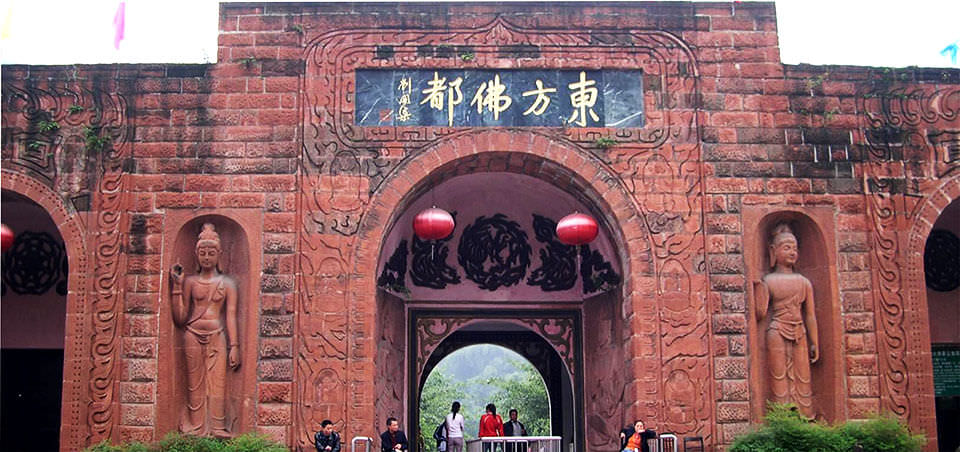
How to visit Giant Buddha Scenic Area?
Land Route: Mountain Gate in Cave Style - Dragon Pool - Wine Pavilion - Leshan Giant Buddha - Lingyun Plank Road - Lingyun Temple - Lingbao Pagoda - Moruo Hall - Moon Pavilion - Dongpo Tower - Beilin Forest - Buddhist Paradise - Bijin Tower - Mahao Fishing Village - Museum of Mahao Cliff Tomb - Wuyou Mountain - Wuyou Temple - Oriental Buddha Center
Water Route: Wharf - Buddha Observing Tower - Giant Sleeping Buddha - Jiulong Beach - River Confluence - Lingyun Mountain - Leshan Giant Buddha - Bijin Tower - Mahao Fishing Village - Museum of Mahao Cliff Tomb - Wuyou Mountain - Fengzhou Island - Wharf
Mixed Route: Wharf - Giant Sleeping Buddha - Jiulong Beach - River Confluence - Lingyun Mountain - Leshan Giant Buddha - Wuyou Mountain - Wuyou Temple - Museum of Mahao Cliff Tomb - Mahao Fishing Village - Buddhist Paradise - Beilin Forest - Yingyun Plank Road - Leshan Giant Buddha - Lingyun Temple - Lingbao Tower - Oriental Buddha Center
Best time to visit Giant Buddha?
The best time to visit Giant Buddha Scenic Area is Spring and Autumn.
How to get to Giant Buddha Scenic Area?
Location: No.23445, Lingyun Road, Downtown Leshan City, Sichuan Province, 150km from Chengdu.
From Chengdu: almost 3 hours by high-speed train; 2.5hours by car.
From Leshan Downtown: Bus K1 and Bus No.3.
How much is the entrance ticket?
Entrance ticket for Giant Buddha Scenic Area: 80 RMB/pax
Boat ticket (covering the panorama of Giant Buddha, giant Sleeping Buddha and three rivers): 70 RMB/pax.
Opening hours: 07:30 - 18:30 (Apr. 1 - Oct.7), 08:00 - 17:30 (Oct.8 - Mar.31)
Tips:
1.The whole boating period is about 15 minutes, you can only appreciate the Giant Buddha on the boat.
2.Please have your “Health Code” prepared before booking the ticket.

